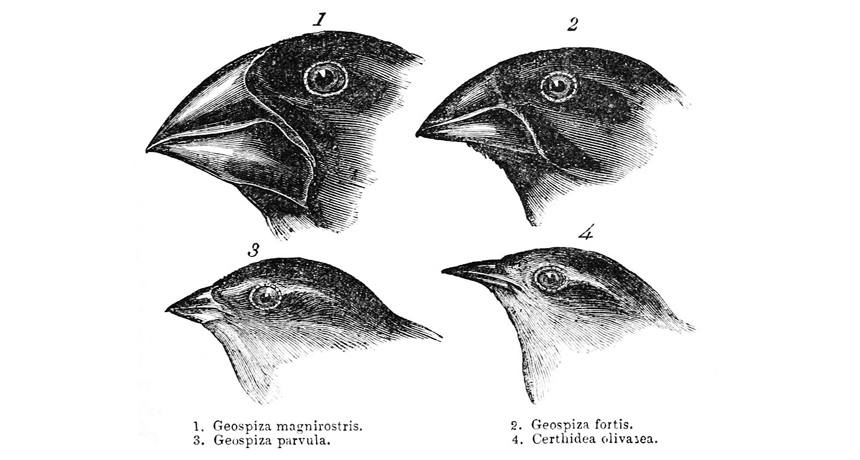Science education video series brings evolution to life

Darwin’s finches were key to the discovery of evolution via natural selection. A new series of educational videos tells this story and more to teach students about science and evolution.
John Gould/Wikimedia Commons
Share this:
- Share via email (Opens in new window) Email
- Click to share on Facebook (Opens in new window) Facebook
- Click to share on X (Opens in new window) X
- Click to share on Pinterest (Opens in new window) Pinterest
- Click to share on Reddit (Opens in new window) Reddit
- Share to Google Classroom (Opens in new window) Google Classroom
- Click to print (Opens in new window) Print
Everyone who has taken high school biology has read about Darwin’s finches. Different species of finches live throughout the remote Galapagos Islands. Millions of years ago they were all the same species, but over time, each species of finch has developed a differently shaped beak. This allows them to eat different kinds of food, depending on where they live. Seeing the finches of the Galapagos gave Darwin the idea of evolution by natural selection.
It’s one thing to see the Galapagos finches in a textbook. It’s quite another to “meet” them on film. A video from the Howard Hughes Medical Institute introduces us to Darwin’s finches, not as they were to Darwin, but as they are now. Rosemary and Peter Grant have been studying the finches to understand more about how evolution works. By following their story, and the story of the finches, students can understand how speciation works. The video is one in a multi-part series called “The Origin of Species.” The videos are 10-30 minutes long and perfect for the high school classroom. They introduce students to real life scientists while teaching viewers how evolution works.
The videos are beautiful to look at and filled with great information. They also have a narrative, telling some of the best stories in science, from Darwin to DNA to the death of the dinosaurs. Many star Sean B. Carroll, an evolutionary biologist at the University of Wisconsin–Madison and HHMI’s vice president of science education. While teaching, Carroll noticed the power of storytelling. “When I digressed into storytelling, talking about people and the time in which they lived, talking about their setbacks, the kids just leaned forward.” He has met former students years later who remember the stories he told.
So when Carroll decided to create a video series for science education, he knew that he wanted to share science as a story. Carroll wants students to “walk in the scientists’ shoes. To see what questions scientists ask, how do they go after those questions.”
Each film comes with a packet of supplementary material for the classroom. The materials have readings, questions and lessons plans. Some have real data to work with and virtual laboratory experiments.
And the best part is that all of the materials are free! Carroll hopes that the videos will help educate students and correct some of the bad information out there about evolution. “The last 15 to 20 years have been a golden age of evolutionary science,” Carroll says. “If we bring these fresh stories to students, let them see how evolution works and let them dip their feet in, who knows where we will be in 10 to 15 years?” He hopes that getting exposed to the great stories of science will be like getting exposed to the great stories of literature or great pieces of music. The end results would be an informed group of students who know about evolution, whether or not they go into science.
You can access the HHMI short videos on their website, along with supplementary materials that go with each one. You can also order DVD sets for free. The videos are targeted at the high school level, but middle school and college students can benefit as well. Whether you’re a student, teacher, or just interested in science, they are well worth watching.